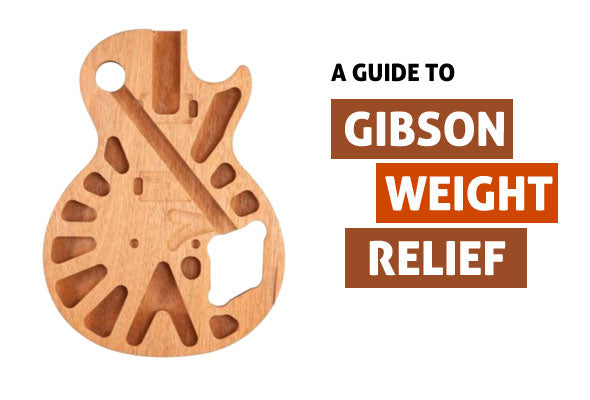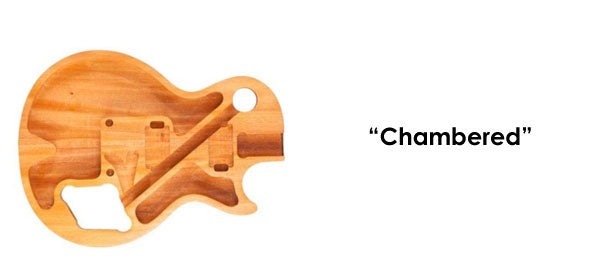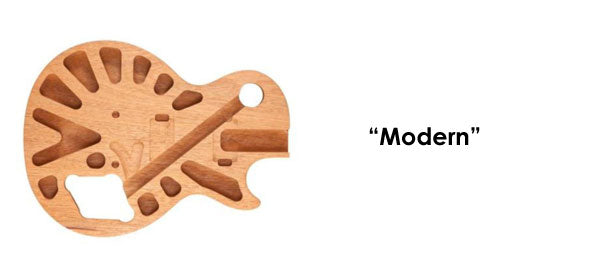A Guide To Gibson Weight Relief

Let’s be honest. Who wants to sling around a 12 lb Les Paul for 90 minutes on stage? Not us. Maybe your chiropractor! The good news is it’s not the ’70s anymore and there really is no such thing as a “boat anchor” Les Paul these days. This is due to some creative weight relief techniques that Gibson uses to keep weights reasonable and in some cases enhance the natural tone of the instrument. Currently, three different weight relief methods are on the market. Want to know more? Let’s break it down.
 This is the oldest method of weight relief and has proven effective for years. 9 round holes are drilled into the mahogany body on the bass side of the guitar before the maple top is glued on. It is simple, effective, and is currently used on the Les Paul Traditional.
This is the oldest method of weight relief and has proven effective for years. 9 round holes are drilled into the mahogany body on the bass side of the guitar before the maple top is glued on. It is simple, effective, and is currently used on the Les Paul Traditional.

Here’s the most extreme method, the chambered Les Paul. Used on the 2008 Les Paul Standard, this technique takes out a lot of weight and results in a guitar with almost an acoustic property. It can sound quite good, and is specifically tuned for the body shape. High volume players might have issues with feedback however.

Here’s the latest version of weight relief, the “Modern” technique. These elliptical shapes allow Gibson to take more material out of the body while also preventing any potential feedback issues created by full-on chambering. If you have a new Les Paul Standard (2012) then you have this type of weight relief.
Overall, it’s not easy to hear or feel the differences between the three different methods. They all work, and offer something unique. Weight relief is a good thing. So next time you pick up your guitar, you can thank Gibson for “watching your back”.













